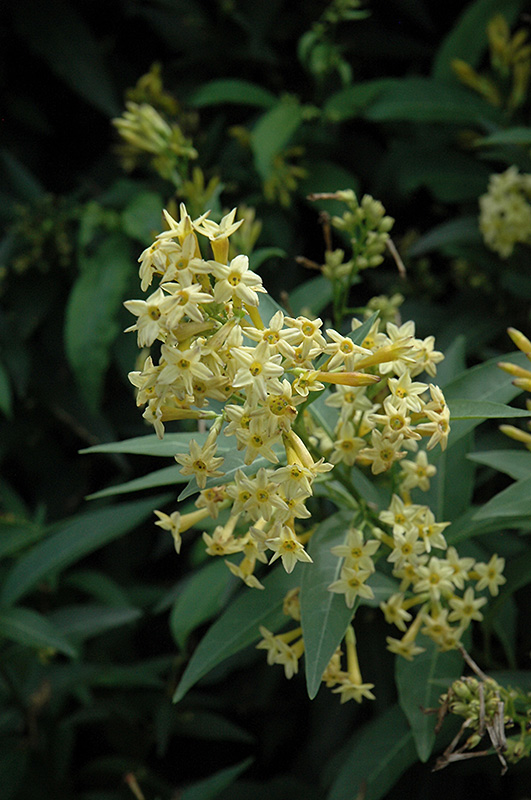Plant Finder
Height: 10 feet
Spread: 10 feet
Sunlight:
![]()
![]()
Hardiness Zone: 8a
Other Names: Green Cestrum, Willow-leaved Jessamine
Description:
This stunning shrub behaves like a perennial in colder zones; masses of yellow flowers above narrow, willow-like leaves from early summer until fall; plant in sheltered area of the garden or along borders; may re-sprout from roots after a hard freeze
Ornamental Features
Willow-leaved Cestrum features showy clusters of fragrant yellow tubular flowers with gold overtones at the ends of the branches from late spring to mid fall. It has bluish-green evergreen foliage which emerges green in spring. The pointy leaves remain bluish-green throughout the winter. It produces black berries from late summer to late fall.
Landscape Attributes
Willow-leaved Cestrum is a dense multi-stemmed evergreen shrub with a shapely form and gracefully arching branches. Its average texture blends into the landscape, but can be balanced by one or two finer or coarser trees or shrubs for an effective composition.
This is a relatively low maintenance shrub, and usually looks its best without pruning, although it will tolerate pruning. It is a good choice for attracting birds, bees and butterflies to your yard. Gardeners should be aware of the following characteristic(s) that may warrant special consideration;
- Invasive
Willow-leaved Cestrum is recommended for the following landscape applications;
- Accent
- Mass Planting
- General Garden Use
Planting & Growing
Willow-leaved Cestrum will grow to be about 10 feet tall at maturity, with a spread of 10 feet. It has a low canopy, and is suitable for planting under power lines. It grows at a medium rate, and under ideal conditions can be expected to live for approximately 30 years.
This shrub does best in full sun to partial shade. It is very adaptable to both dry and moist growing conditions, but will not tolerate any standing water. It is not particular as to soil type or pH. It is somewhat tolerant of urban pollution, and will benefit from being planted in a relatively sheltered location. Consider applying a thick mulch around the root zone in winter to protect it in exposed locations or colder microclimates. This species is not originally from North America, and parts of it are known to be toxic to humans and animals, so care should be exercised in planting it around children and pets.




